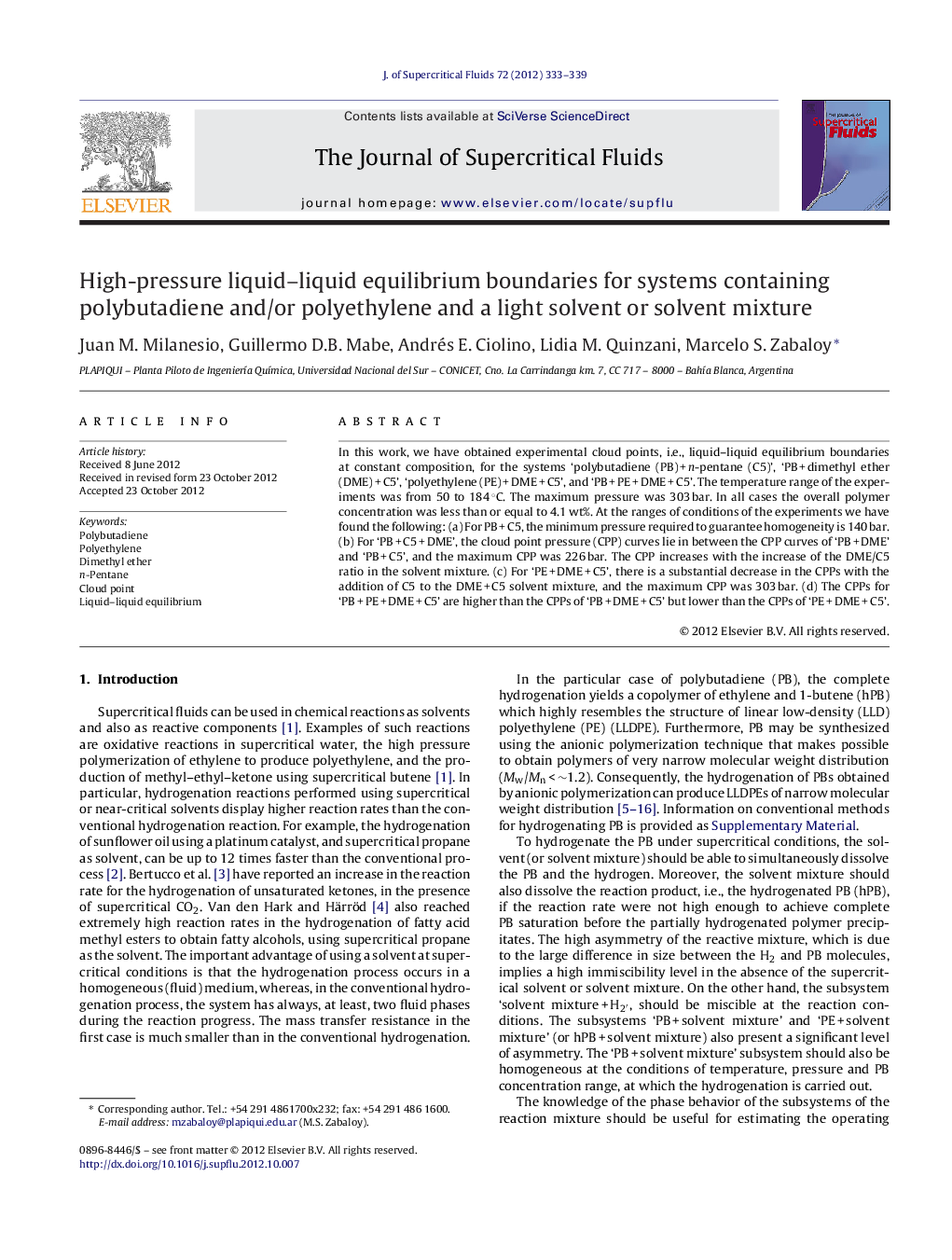| Article ID | Journal | Published Year | Pages | File Type |
|---|---|---|---|---|
| 230945 | The Journal of Supercritical Fluids | 2012 | 7 Pages |
In this work, we have obtained experimental cloud points, i.e., liquid–liquid equilibrium boundaries at constant composition, for the systems ‘polybutadiene (PB) + n-pentane (C5)’, ‘PB + dimethyl ether (DME) + C5’, ‘polyethylene (PE) + DME + C5’, and ‘PB + PE + DME + C5’. The temperature range of the experiments was from 50 to 184 °C. The maximum pressure was 303 bar. In all cases the overall polymer concentration was less than or equal to 4.1 wt%. At the ranges of conditions of the experiments we have found the following: (a) For PB + C5, the minimum pressure required to guarantee homogeneity is 140 bar. (b) For ‘PB + C5 + DME’, the cloud point pressure (CPP) curves lie in between the CPP curves of ‘PB + DME’ and ‘PB + C5’, and the maximum CPP was 226 bar. The CPP increases with the increase of the DME/C5 ratio in the solvent mixture. (c) For ‘PE + DME + C5’, there is a substantial decrease in the CPPs with the addition of C5 to the DME + C5 solvent mixture, and the maximum CPP was 303 bar. (d) The CPPs for ‘PB + PE + DME + C5’ are higher than the CPPs of ‘PB + DME + C5’ but lower than the CPPs of ‘PE + DME + C5’.
Graphical abstractFigure optionsDownload full-size imageDownload as PowerPoint slideHighlights► Cloud point pressure (CPP) of the system ‘polybutadiene (PB) + n-pentane (C5) + dimethyl ether (DME)’ increases with an increase in DME/C5 ratio. ► CPP of the system ‘polyethylene (PE) + DME + C5’ substantially decreases with addition of C5 to the DME + C5 solvent mixture. ► CPPs for ‘PB + PE + DME + C5’ are higher than the CPPs of ‘PB + DME + C5’ but lower than the CPPs of ‘PE + DME + C5’.
